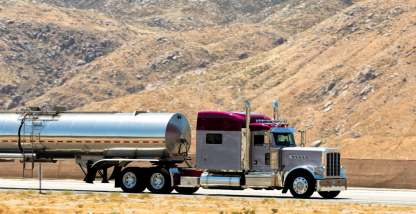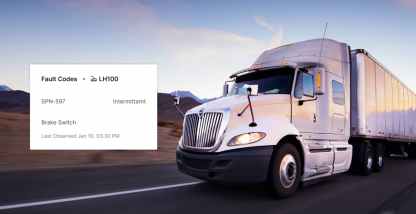Every day, last-mile delivery vehicles roam residential neighborhoods and city centers, full of packages, groceries, appliances, furniture, and more. In 2022, 35.6 million packages were shipped on an average day, meaning the average American received 21 packages throughout the year.
This continues a trend that has only grown since the COVID-19 pandemic began. The last-mile delivery market is forecast to grow another 62% between 2023 and 2027.
Yet “free shipping” is far from free: studies show that up to 53% of total transportation costs are consumed by the last stretch to a customer’s home. And while Amazon Logistics hired 275,000 workers in 2020 to keep up with the demand, fleets are struggling to hire enough drivers to meet the demand. They often turn to part-time contractors using their own vehicles or third-party companies.
No matter who they work for, last-mile delivery drivers must meet aggressive time and productivity goals. Drivers may make more than 200 stops in a single day, creating more opportunities for accidents.
That’s why many last-mile delivery fleets are focusing on improving driver safety — which can also improve productivity and consumer satisfaction. In this post, we’ll explore:
- How AI can identify the most dangerous driver behaviors to minimize accidents
- How fleets can use dash cam footage to exonerate drivers
- Why a focus on safety can keep drivers on schedule
- How real-time updates and geofencing can improve tracking and customer satisfaction
How AI can identify the most dangerous driver behaviors
Last-mile delivery drivers are under pressure to deliver quickly — which may prompt them to take risks behind the wheel. They may also look at a smartphone to view their next stop while the vehicle is in motion.
AI can help identify these risky behaviors. For example, Motive’s AI Dashcam can detect unsafe behaviors and alert drivers to modify their behaviors in real time. Motive’s in-cab alerts can instantly notify drivers to keep their eyes on the road, increase their following distance, or take other actions. Correcting behaviors in the moment helps drivers learn from their mistakes.
At the fleet level, the Motive Fleet Dashboard adds context to each video, helping fleet managers focus on the most serious incidents without manually reviewing hours of video footage.
With that prioritized footage, fleet managers can coach their drivers to make improvements. It can be very powerful to show drivers how dangerous the situation could have become.
How AI can exonerate last-mile delivery drivers
Dash cam footage can also exonerate drivers when they’re falsely accused of causing an accident. For example, D&A McRae, Inc shared Motive AI dashcam footage with law enforcement to prove that a collision occurred when their driver was cut off by another vehicle changing lanes.
“Footage from Motive’s Smart Dashcam exonerated our driver on the spot and saved us what could have been close to $50K in damages,” terminal manager Rod Conrad says. The footage also prevented legal headaches and a hit to the driver’s CSA score.
How a focus on safety can keep last-mile delivery drivers on schedule
Minor fender-benders can cause downtime. Even when no one is injured, drivers must file incident reports, police reports, or other paperwork. Insurance companies get involved.
Meanwhile, the driver is still on the clock, with a truck or van full of deliveries growing later and later.
Focusing on reducing your drivers’ risky behaviors can reduce your fleet’s overall incident rate — keeping drivers on schedule and customers satisfied.
Real-time updates and geofencing can improve last-mile delivery tracking and customer satisfaction
While many last-mile delivery services simply leave a package on a doorstep, others are more time sensitive. Some require a customer to be home to accept delivery of furniture, electronics, alcohol, or anything that requires installation. Customers can grow frustrated with long delivery windows, especially if the driver is running late.
With real-time location tracking, Motive Fleet View can help provide customers with an updated, accurate ETA that keeps customers in the loop. Last-mile delivery tracking that uses geofencing can identify when a driver leaves the previous stop or reaches a certain distance from the customer, enabling an automated message to the customer. Customers are happier when they know that their driver is on the way and will arrive at approximately 11:15 AM rather than “between 8 AM and 12 PM.”
Dispatchers can also use Motive Fleet View to share documents and message drivers so they’re ready with all pertinent details and customer requests.
Better tracking cuts down on frustrated customer calls, wondering where their driver is.
Read: The ultimate guide to middle-mile logistics.
Improve safety and productivity for your fleet
Motive can help you improve the safety, productivity, and customer satisfaction for your last-mile delivery service. Request a demo to see what we can do for your fleet.








